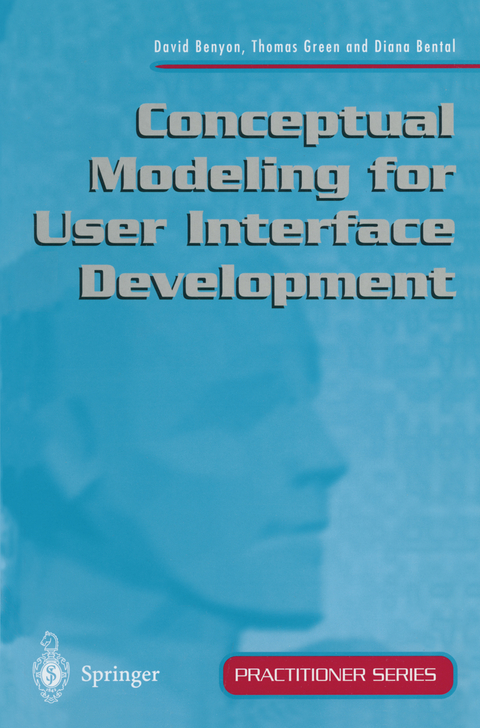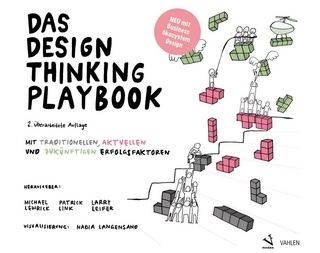
Conceptual Modeling for User Interface Development
Springer London Ltd (Verlag)
978-1-85233-009-5 (ISBN)
Conceptual Modeling for User Interface Development introduces the technique of Entity-Relationship-Modeling and shows how the technique can be applied to interface issues. It explains those aspects of entity-relationship modeling which are relevant to ERMIAs, and it presents the extensions to the notation that are necessary for modeling interfaces. This book is aimed at both interface designers and software developers in an attempt to bridge the gap in the development of interactive systems. Too often, when software is being developed, the software engineers do not sufficiently consider how easy the system will be to learn and use. On the other side, interface specialists tend to express their concerns in ways which are either too detailed to be readily understood or in ways which are difficult for the software developer to implement. ERMIA provides a set of concepts which can be used equally easily by software developers and interface designers alike.
1. Modeling in User Interface Development.- 1.1 User Interface Development.- 1.2 Principles of Design.- 1.3 Models in Design.- 1.4 User Interface Development: The Functional View.- 1.5 Models of Dynamics.- 1.6 Models of Structure.- 1.7 The Role of ERMIA in User Interface Development.- 2. An Introduction to ERMIA.- 2.1 Evaluating Designs and Devices.- 2.2 ERMIA in a Nutshell.- 2.3 Information Artefacts.- 2.4 The Uses of ERMIA.- 3. The Components of an ERMIA Model.- 3.1 The Components.- 3.2 Entity.- 3.3 Relationship.- 3.4 Attribute.- 3.5 Entity, Relationship or Attribute?.- 3.6 Example: A Database of Papers Submitted to a Conference.- 3.7 Example: Telephone Network.- 4. Conceptual and Perceptual ERMIAs.- 4.1 The Information to Be Displayed versus the Display Itself.- 4.2 Manifest and Conceptual Entities and Relationships.- 4.3 Perceptually-coded Attributes.- 4.4 Example: A List Viewport.- 4.5 Distributed Conceptual Information.- 4.6 Comparing Different User Views.- 5. Searching for Information.- 5.1 Information Can Be Hard to Find.- 5.2 The Five Types of Entity Store.- 5.3 Example: The List of Flowers Revisited.- 5.4 Searching More Complex Structures.- 6. Dealing with Complex Relationships.- 6.1 Decomposing Many-to-Many Relationships.- 6.2 Different Manifest Structures Lead to Different Search.- 6.3 Making Many-to-Many Relationships Easy to Explore.- 6.4 Example: A Drum Machine Pattern Sequencer.- 6.5 Fossil Silt.- 7. Standard Structures and Safe Paths.- 7.1 Standard Structures for Search.- 7.2 Safe Trails.- 7.3 Connection Traps.- 7.4 Short Cut Keys.- 8. Representing Different Views.- 8.1 Levels of Information Artefacts.- 8.2 Example: Currency Exchange.- 8.3 Different Views Facilitate Different Tasks.- 8.4 Representing Mental Models.- 9. Developing ERMIAs.- 9.1 ERMIA as aLanguage for Design.- 9.2 Heuristics for ERMIA.- 9.3 Methodology for ERMIA.- 9.4 Case Study: The Oven Hob Problem.- 9.5 Building the ERMIA.- 10. Practical ERMIA Modeling.- 10.1 The Appointments Diary.- 10.2 The Alarm Clock.- 10.3 The ATM.- 11. Case Study.- 11.1 The Domain.- 11.2 Conceptual ERMIA of XBarnacle.- 11.3 A Perceptual ERMIA of the XBarnacle Interface.- 11.4 Using ERMIA to Identify Potential Usability Problems.- 11.5 Did the problems materialize?.- 11.6 Introducing critics: XBarnacle.- 12. Conclusions.- 12.1 ERMIA and Other Techniques.- 12.2 Choosing a Modeling Method.- 12.3 Usability Issues.- 12.4 Future Developments.- Solutions to Exercises.- Summary of Notation.- Resources.
| Erscheint lt. Verlag | 11.6.1999 |
|---|---|
| Reihe/Serie | Practitioner Series |
| Zusatzinfo | 13 Illustrations, black and white; XIII, 187 p. 13 illus. |
| Verlagsort | England |
| Sprache | englisch |
| Maße | 155 x 235 mm |
| Themenwelt | Mathematik / Informatik ► Informatik ► Betriebssysteme / Server |
| Informatik ► Software Entwicklung ► User Interfaces (HCI) | |
| ISBN-10 | 1-85233-009-0 / 1852330090 |
| ISBN-13 | 978-1-85233-009-5 / 9781852330095 |
| Zustand | Neuware |
| Informationen gemäß Produktsicherheitsverordnung (GPSR) | |
| Haben Sie eine Frage zum Produkt? |
aus dem Bereich


